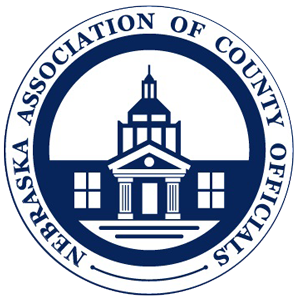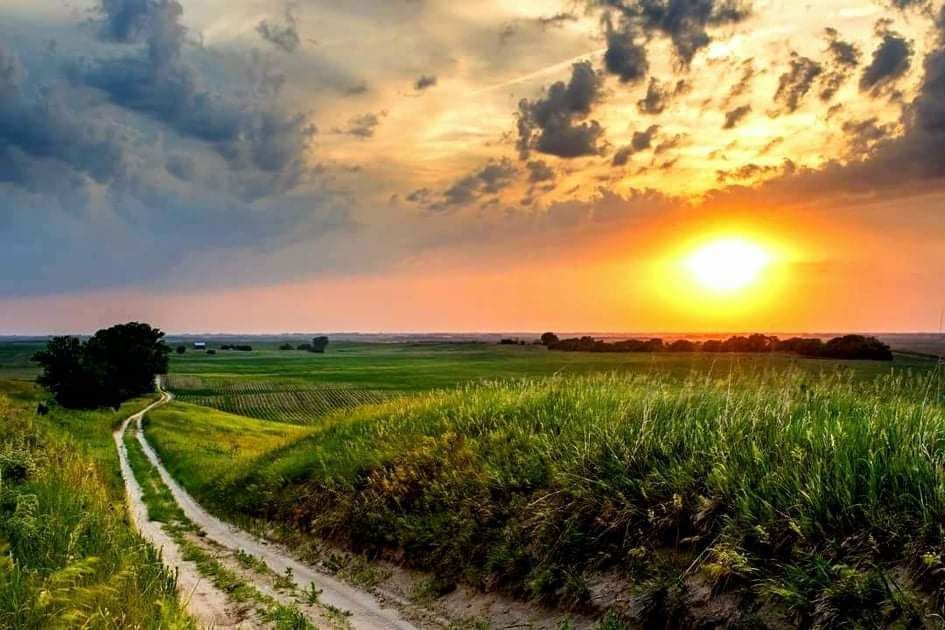- General Info
- Demographics
- Education and Employment
- Valuation and Taxes Levied
- State Senators
- History
- County Programs
- Other Information
Communities & Development
Cheyenne County Seat: Sidney
Total County Population: 9,468
- Cities (pop. & class): Sidney (6,410 • 1st Class)
- Villages (pop.): Dalton (284), Gurley (187), Lodgepole (312), Potter (342)
- Unincorporated Pop. (% of county pop.): 1,933 (20%) 2020
Land Development (2022) (% of total land in county):
- Agriculture: 84%
- By method: Dryland (row crop/grain/forage) (52%); Pasture (pure grassland) (24%); Irrigated (row crop/grain/forage) (8%) • Neb. Dept. of Rev. - total equals agriculture's %
- By commodity: Livestock (grassland) 37%, Wheat 18%, Corn 11%, Millet 8%, Sorghum 1%, Peas 1%, Alfalfa 1% • USDA - equals agriculture's % plus some fallow land (18%) and some wetlands (0.25%) and minus public grassland/wetlands and reserve
- Residential, Commercial, Industrial, Conservation Reserve & Exempt (combined): 16% 2020
County Offices
Courthouse Address and Hours:
1000 10th Avenue
Sidney, Nebraska 69162
M-F 8:00 am - 5:00 pm
County Board Chairperson: Darrell Johnson
Complete list of county board members
County Board Meetings: 1st & 3rd Monday
View the County's Government Maps
NACO District: Panhandle
General
Population: 9,468
Land area (sq. mi.): 1,196.01
Population per square mile: 7.9
Race & Age
Race 2020
White: 87%
African American: 0.5%
American Indian: 0.3%
Asian: 0.8%
Hispanic: 7.9%
Native Hawaiian and Pacific Islander: 0.0%
Two or More Races: 3.0%
Age 2020
0-17: 23.4%
18-64: 54.7%
65+: 21.8%
Households
Total households: 4,168 2020
With one child: 450 2022
With 2+ children: 630 2022
With seniors (65+): 1,100 2022
Socioeconomics
Median household income: $57,594 2023
% of Population in Poverty: 12.0% 2023
# of Housing Units: 4,891 2020
Owner-occupied rate: 69.4% 2020
Median home price: $139,650 Q4 2024
2024 building permits for detached single family homes: 10
2024 building permits for non-detached housing units: 0 (townhouse, duplex, or apt. unit)
Technology
Access to broadband (100 Mbps via fiber or cable modem): 62.6% 2021
Sources: National Association of Realtors, Nebraska Department of Revenue, Nebraska Legislature, Nebraska Library Commission, U.S. Bureau of Economic Analysis, U.S. Census Bureau (building permits), U.S. Census Bureau (demographics), U.S. Census Bureau (municipalities)
Employment, Schools, and Child Care
Unemployment rate: 2.2% March 2025
County Employment Website: https://nebraskacounties.org/nebraska-counties/county-employment-opportunities.html
High school graduate or higher: 94.6% 2020
School Districts: Creek Valley Schools, Leyton Public Schools, Potter-Dix Public Schools, Sidney Public Schools
Bachelor's degree or higher: 25.5% 2020
Community College Service Area: Western Community College
Countywide child care capacity: 5 providers; 336 children 2024
Find child care: For a list of child care providers in your zip code, visit Nebraska DHHS or the Nebraska Resource and Referral System.
Cheyenne County Economy
Annual Gross Domestic Product (GDP): $662,098,000 2023
Nonfarm Small Business Receipts: $107,645,423 2022
Nonfarm Wage Income: $190,467,000 2022
Farm and Ranch Commodity Sales Receipts: $192,584,00 2022
Farm and Ranch Operations (Non-Sales) Receipts: $21,499,000 2022
- For components of nonfarm small business receipts, nonfarm wage income, and farm & ranch commodity sales and operations receipts, see "Notes" below.
Grain Elevators by Location (bushels capacity):
- Dalton: Crossroads (549,000)
- Gurley: Crossroads (2,955,000)
- Huntsman: Crossroads (450,000)
- Lodgepole: FVC (650,000)
- Lorenzo: Crossroads (1,046,000)
- Potter: Crossroads (1,206,000)
- Sidney: Scoular (5,002,810)
- (1 bushel = 56 lbs. corn/sorghum, 60 lbs. soybeans/wheat; % max. moisture = 18% beans, 15.5% corn, 14% sorghum/soybeans, 13.5% wheat)
Railroad Miles: 115.54 main, 25.39 side
- Places with Railroad Service: Dalton, Gurley, Lodgepole, Lorenzo, Potter, Sidney, Sunal
Local Grain Market: Click for today's grain prices in Cheyenne County
Cattle Producers: 127
- Pastureland Cash Rent (avg.): $16/acre 2024
Crop Producers: 106
Farmers Markets: Sidney Farmers Market (June - September, Saturdays 8 a.m. - 12 p.m.)
Oil & Gas Wells Producing (barrels of oil & thousand cubic ft. of gas/yr.): 96 wells (115,940 barrels; 2,394 MCF Casinghead Gas; 260,200 MCF Dry Gas) 2023
Electricity Providers: City of Lodgepole, City of Sidney, High West Energy, Western Area Power Administration, Wheat Belt PPD
Notes
- Nonfarm small business receipts are reported by partnerships and sole proprietorships. They do not include receipts reported by cooperative associations.
- Nonfarm wage income is reported based upon the wage earner's residential address; therefore, it also includes wages earned by Cheyenne County residents in other counties or states, but it excludes wages earned in Cheyenne County by residents of other counties or states.
- Nonfarm wage income excludes wages earned by anyone claimed as a dependent.
- Farm and ranch commodity sales receipts and operations receipts are reported based upon the farm or ranch owner's principal county of operations; therefore, those figures also include receipts reported by producers operating principally in Cheyenne County for their production in other counties or states, but the figures exclude receipts reported for production in Cheyenne County by producers operating principally in other counties or states.
Irrigation, Drinking Water, and Soils
Rural Irrigation/Livestock Wells: 746 2024
Rural Commercial/Industrial Wells: 18 2024
Rural Drinking Water Wells: 287 2024
Drinking Water Utility Connections: 3,236 Residential; 641 Commercial; 0 Industrial 2024
Agricultural Wells per Square Mile: 0.61 2024
Surface Water Diversions (Irrigation): 30 2024
Click for real time:
Groundwater level data four miles north of Sidney
Sources: National Agricultural Statistics Service (USDA), Nebraska Cooperative Council, Nebraska Coordinating Commission for Postsecondary Education, Nebraska Department of Health and Human Services, Nebraska Department of Revenue, Nebraska Department of Transportation, Nebraska Office of the CIO, Nebraska Power Review Board, Nebraska Public Service Commission, U.S. Bureau of Economic Analysis, U.S. Bureau of Labor Statistics, U.S. Census Bureau, U.S. Energy Information Administration, U.S. Department of the Treasury (IRS), Warehouse and Commodity Management Division (USDA)
2024 Levies and Valuations
County levy rate: $0.4065 per $100 of taxable valuation
County property taxes levied: $6,217,305
Total local government property taxes levied: $26,742,831
Total countywide taxable valuation: $1,529,559,830
Click here for all levy rates in Cheyenne County
County Levy and Taxation Laws
Levy limits
Since 1996, counties and other political subdivisions have been subject to the levy limits listed in Neb. Rev. Stat. § 77-3442 and Neb. Rev. Stat. § 77-3443.
Statutes and regulations
Nebraska Revised Statutes (Chapter 77)
Nebraska Administrative Code (Title 350)
Local tax reductions, exemptions, and credits:
Neb. Rev. Stat. § 76-902(5)(a) (Deed "stamp tax" exemption): "The [stamp tax] shall not apply to: ... (5)(a) Deeds between spouses, between ex-spouses for the purpose of conveying any rights to property acquired or held during the marriage, or between parent and child, without actual consideration therefor."
Neb. Rev. Stat. § 77-201(2) (Valuation of agricultural land and horticultural land): "Agricultural land and horticultural land as defined in section 77-1359 shall constitute a separate and distinct class of property for purposes of property taxation, shall be subject to taxation, unless expressly exempt from taxation, and shall be valued at seventy-five percent of its actual value, except that for school district taxes levied to pay the principal and interest on bonds that are approved by a vote of the people on or after January 1, 2022, such land shall be valued at fifty percent of its actual value."
Neb. Rev. Stat. § 77-6703(1) (Tax credit for school district taxes paid): "(1) For taxable years beginning or deemed to begin on or after January 1, 2020, under the Internal Revenue Code of 1986, as amended, there shall be allowed to each eligible taxpayer a refundable credit against the income tax imposed by the Nebraska Revenue Act of 1967 or against the franchise tax imposed by sections 77-3801 to 77-3807. The credit shall be equal to the credit percentage for the taxable year, as set by the department under subsection (2) of this section, multiplied by the amount of school district taxes paid by the eligible taxpayer during such taxable year."
Sources: Nebraska Department of Revenue
State Senator: Paul E. Strommen (District 47)
Committees:
- Appropriations
- Legislature's Planning Committee
- Homeland Security Policy Group
- Statewide Tourism And Recreational Water Access and Resource Sustainability (LB406)
Map and statistics for Legislative District 47
Map of all districts in the Nebraska Unicameral Legislature
Cheyenne County History
Number of Registered Historic Places: 12
Year Authorized: 1871
Year Organized: 1871
Etymology: Cheyenne Native American tribe
The development of Cheyenne County can be traced to the Oregon and Mormon Trails, which brought settlers to and through the area in the 1840’s. The proliferation of settlers and subsequent displacement of Native American tribes accelerated as the Union Pacific Railroad continued its expansion through western Nebraska. The county draws its name from the Cheyenne tribe who inhabited the land prior to arrival of settlers. In 1867, as the railroad moved into Wyoming, the southern half of Cheyenne County witnessed rapid development. Cheyenne County was formally established in June of 1871, comprising the southern half of the Panhandle. Later, Kimball, Banner, Deuel, Morrill, and Scotts Bluff County were carved from Cheyenne.
The railroad encampment (called “Sidney” after the Union Pacific Railroad president Sidney Dillion) gave rise to a town that quickly developed a wild and untamed reputation. Though earnest citizens worked hard to develop Sidney, the town’s population and raucous activities were dominated by railroad workers, cowboys fresh off the cattle drives, freight workers, soldiers, horse thieves, and outlaws (Sidney claims Calamity Jane as a former resident). Though Sidney would eventually become the county seat, it was initially known as “Sinful Sidney” and the “Wickedest Town in the West.”
However, like many frontier counties, law and order gradually found its way to Cheyenne County, and its towns soon boasted schools, newspapers, and bustling business districts. Originally created to establish a military presence on the western plains, Fort Sidney eventually gave way to the Sioux Ordnance Depot in World War II. The Depot was a 19,000-acre munitions storage facility, the construction of which prompted an economic boom in the 1940’s. The county’s economic fortunes also rose as oil companies began sinking wells amid the ranchland. Later, the construction of Interstate 80 brought traffic directly through the heart of the county and further bolstered development.
Highlight an important program in your county in this space! Send an email to:
Local Highlights
License Plate Number: 39
Time Zone: Mountain
Number of Veterans: 681 2023
Zoned County: Yes
County Hospital: Cheyenne County Hospital Association (Sidney Regional Medical Center)
Number of County-Owned Bridges: 83
Election Data
General Election Turnout: 72% 2024
Total Registered Voters: 6,352 2024
Number of Precincts: 9 2022
Number of Election Day Polling Places: 5 2022
Land Area per Polling Place (avg.): 239.22 sq. miles
Intergovernmental Data
Emergency Mgt. Planning, Exercise and Training (PET) Region: Panhandle
Natural Resource District: South Platte NRD
State Lands (acres): High Plains Ag Lab (799), Sidney Rest Area EB (14.6), Sidney Rest Area WB (20.6)
Sources: Nebraska Department of Transportation, Nebraska Emergency Management Agency, Nebraska Game & Parks Commission, Nebraska Legislature, Nebraska Office of the CIO, Nebraska Secretary of State, U.S. Department of Veterans Affairs, U.S. Election Assistance Commission, U.S. National Archives and Records Administration (eCFR)



